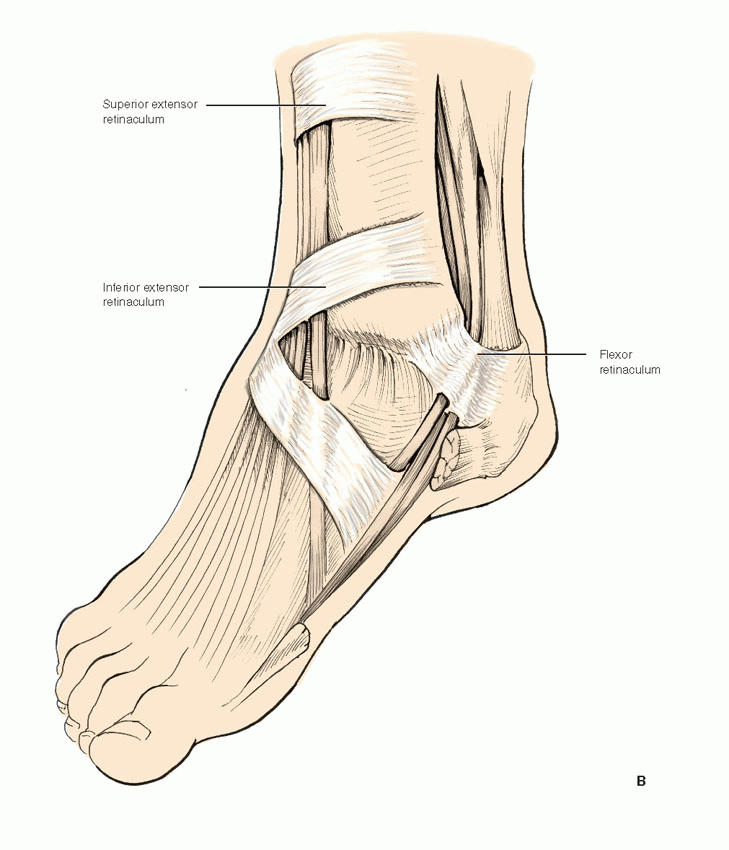

Attaches proximally to the distal part of the fibula distally, it attaches to the base of metatarsal 5. The deep fibular nerve (L5 and S1) innervates this muscle. The extensor hallucis longus muscle extends the great toe and dorsiflexes the foot. Attaches proximally on the fibula and interosseous membrane distally, it attaches to the distal phalanx of the great toe. The extensor digitorum longus muscle extends lateral digits 2 to 4 and dorsiflexes the foot at the ankle joint. Attaches proximally on the fibula and lateral tibial condyle distally, it attaches to the dorsal digital expansions into digits 2 to 5. The deep fibular nerve (L4 and L5) innervates this muscle. The tibialis anterior muscle dorsiflexes the foot at the ankle joint and inverts the foot. Attaches proximally to the tibia and interosseous membrane distally, it attaches to the medial cuneiform and the base of metatarsal 1. Inversion and plantarflexion of foot support of medial arch of foot during walking Navicular, all cuneiform bones, and metatarsals 2–4 Posterior surface of fibula and interosseous membrane Unlocks knee joint laterally rotates femur on fixed tibia Posterior compartment of the leg (deep group) Posterior aspect of tibia (soleal line) and posterior aspect of fibular head and shaft Via calcaneal tendon to posterior surface of calcaneus bone Lateral head: superior to lateral femoral condyle

Medial head: superior to medial femoral condyle Posterior compartment of the leg (superficial group)

Via dorsal digital expansions into digits 2–5Įxtension of lateral digits 2–5 and dorsiflexion of footĮxtension of great tow and dorsiflexion of foot Medial cuneiform and base of metatarsal 1ĭorsiflexion of foot at ankle joint inversion of foot


 0 kommentar(er)
0 kommentar(er)
